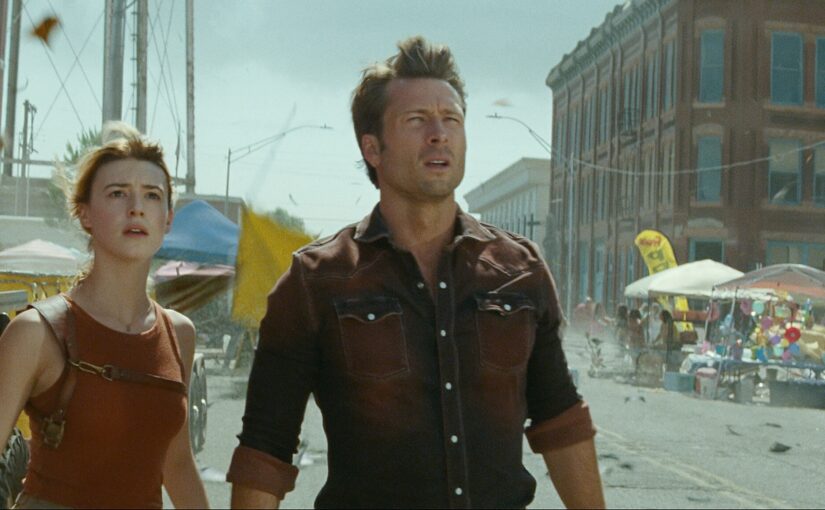In 1996, Twister stormed into cinemas, becoming the second highest-grossing film of the year, just behind Independence Day. The movie received two Oscar nominations for its outstanding sound and visual effects. Its narrative, centring on a team of storm-chasers tackling an unprecedented tornado event while navigating a complex love story, captivated audiences. With Helen Hunt and Bill Paxton at their peak, Twister heralded a new age of disaster films. It wasn’t flawless, but combined with Jan de Bont’s directorial style, an extremely talented cast, and state-of-the-art effects from Industrial Light & Magic, audiences were blown away.
Now, in a vastly different world from 1996, Twisters aims to recapture that magic. Directed by Oscar-nominated Lee Isaac Chung (Minari), this modern disaster film boasts an ensemble cast featuring Glen Powell (Hit Man, Anyone but You), Daisy Edgar-Jones (Fresh), Brandon Perea (Nope), and Anthony Ramos (In the Heights).
Twisters begins with Edgar-Jones’ Kate leading a group of college storm chasers. A life-altering event in the film’s opening causes Kate to abandon storm chasing for a business career in New York City. Five years later, Ramos’ Javi, a military veteran turned entrepreneur, convinces her to return to Oklahoma to help develop a groundbreaking tornado tracking system.
Unlike Twister, co-written by Michael Crichton, Twisters features a screenplay by Mark L. Smith (Midnight Sky). While Edgar-Jones and Ramos share good chemistry, Powell’s Tyler, a YouTube storm-chasing star, adds comic relief and tension. Tyler’s social media antics contrast sharply with Kate and Javi’s scientific goals, leading to inevitable intrigue and rivalry.
Director Chung chose not to address climate change in Twisters, believing cinema shouldn’t preach. As a result, the film focuses on entertainment rather than scientific or environmental commentary, and it’s so much stronger for it. Every character is deeply flawed but yearns to be better. Powell and Edgar-Jones are a believable couple. However, Edgar-Jones’ accent slips occasionally, revealing her London roots.
Chung and his team deliver a mix of action and light-hearted storytelling, providing audiences with a whirlwind of entertainment. At just under two hours, Twisters maintains a good pace, though it peaks early with an incredible opening that it fails to top.
⭐️⭐️⭐️

